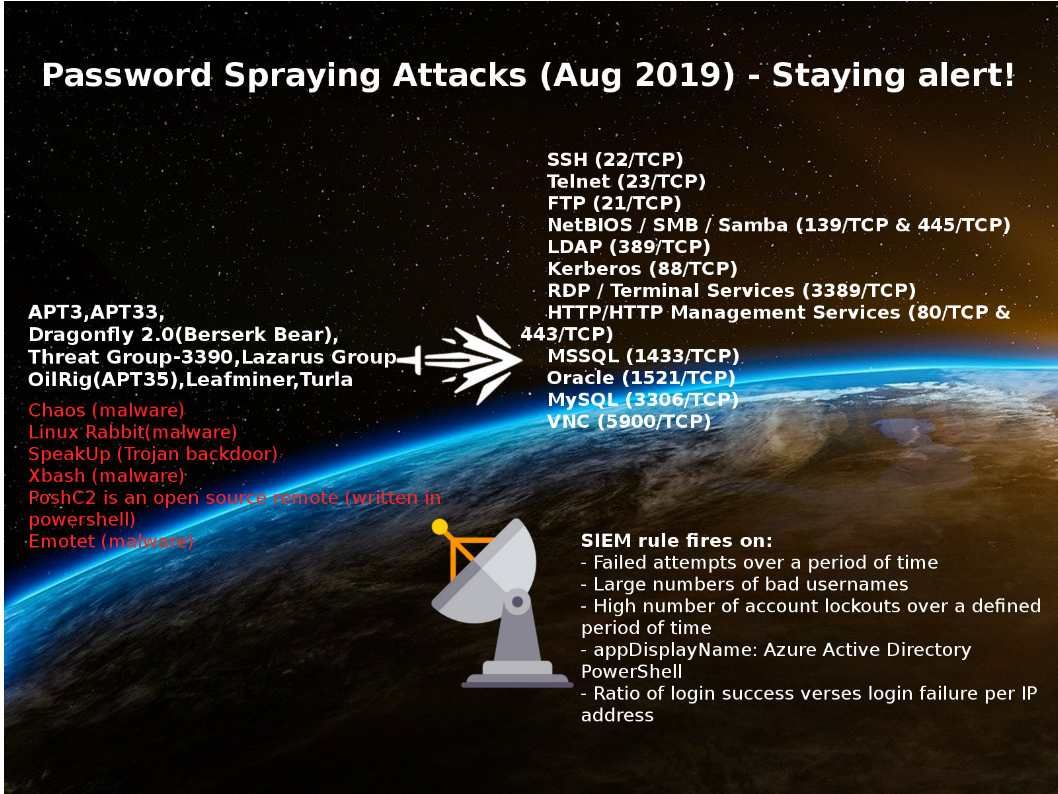
Preface: Even though you company install full set of cyber defense mechanism. More than 70% of feature is detective and preventive. Perhaps SIEM can do a predictive action. May be you have doubt, but it is factual.
Details: Australian Cyber Security Centre urge his citizen beware of Password Spraying Attacks (refer below url): https://www.cyber.gov.au/sites/default/files/2019-08/2019-130_-_password_spray_attacks_detection_and_mitigation_strategies.pdf
Such activities has been observed by U.S. Homeland security for long time. Consolidate their evaluation results, summary shown as below:
Part A: Commonly used ports are used when password spraying.
SSH (22/TCP)
Telnet (23/TCP)
FTP (21/TCP)
NetBIOS / SMB / Samba (139/TCP & 445/TCP)
LDAP (389/TCP)
Kerberos (88/TCP)
RDP / Terminal Services (3389/TCP)
HTTP/HTTP Management Services (80/TCP & 443/TCP)
MSSQL (1433/TCP)
Oracle (1521/TCP)
MySQL (3306/TCP)
VNC (5900/TCP)
Part B: Cyber Attack Group & Commonly used malware
Group name: APT3,APT33,Dragonfly 2.0(Berserk Bear),Threat Group-3390,Lazarus Group , OilRig(APT35),Leafminer,Turla
Malware types:
Chaos (malware)
Linux Rabbit(malware)
SpeakUp (Trojan backdoor)
Xbash (malware)
PoshC2 is an open source remote (written in powershell)
Emotet (malware)
SIEM Definition – Firing Rules criteria (see below):
1. Failed attempts over a period of time
2. Large numbers of bad usernames
3. High number of account lockouts over a defined period of time
4. Unknown “appDisplayName” – Active Directory PowerShell
5. Ratio of login success verses login failure per IP address
Remark: If your IT infrastructure is a Cloud IaaS deployment, perhaps you need to do the monitoring by yourself.
If the above 5 items triggers your SIEM rules. Even though the activities not in high amount. But you requires to observe the continuity level. Most likely on those activities alert that cyber attack group is interested of your company.